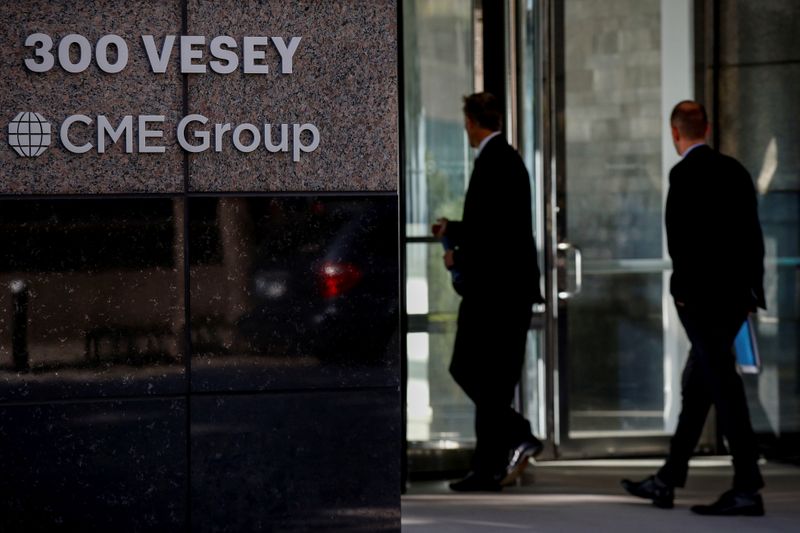(Reuters) – CME Group <CME.O>, the world’s biggest futures exchange operator, said on Wednesday third-quarter profit plunged 35% as the ultra-low rate environment, aimed at easing the economic blow of the COVID-19 pandemic, cut demand for some of its top products.
The U.S. Federal Reserve flooded the markets with liquidity in response to the pandemic and said interest rates would stay near zero for the foreseeable future. As a result, volumes for CME’s rates and energy products, which are used for hedging against price big moves, were down 51% and 25% respectively.
But as the past year has shown, things can change quickly, and the U.S. presidential election on Nov. 3 has the potential to quickly shift market sentiment, especially if there is no clear winner declared on Election Day, CME Chief Executive Officer Terry Duffy told analysts on a conference call.
“You could see a lot of uncertainty around the marketplace, and I’m not just reflecting on the price of equities, I’m looking at how people perceive the price of debt coming out … of the United States if we go into this contested election process,” he said.
“On the rate story, there is something here that people need to be cautious about.”
CME shares were down 6.9% at $148.45 on Wednesday morning on the Nasdaq.
CME’s net income for the quarter ended Sept. 30 declined to $411.5 million, or $1.15 per share, versus $636.3 million, or $1.78 per share, last year.
Stripping out one-time items like acquisition costs, the company reported earnings per share of $1.38, 3 cents below Refinitiv IBES estimates.
Clearing and transaction fee revenue – the company’s biggest source of income – fell nearly 20% to $835.4 million in the quarter as overall average daily volumes dropped, despite robust levels for CME’s metals, equities, and agriculture futures products.
Total revenue fell to $1.08 billion from $1.28 billion a year earlier.
(Reporting by John McCrank in New York and Ambar Warrick in Bengaluru; Editing by Sherry Jacob-Phillips and Matthew Lewis)
























